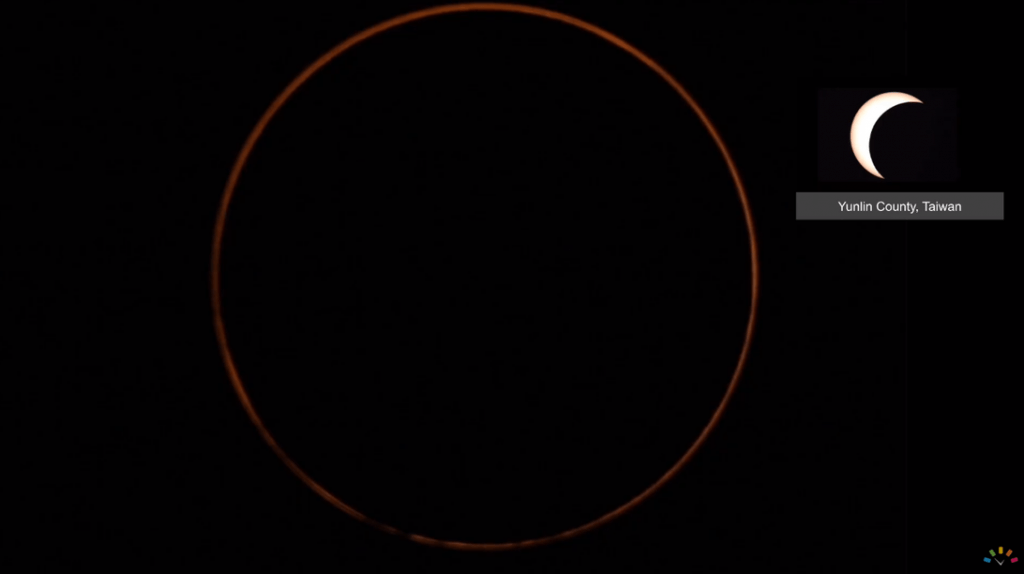Photographer Kristen M Caldon captured this annular solar eclipse sequence at the Grand Canyon National Park in 2012.
Kristen M. Caldon/NPS/Grand Canyon National Park
The first of two solar eclipses for 2020 turned the sun into a glowing “ring of fire” on Sunday. People situated along a narrow band of the world, across parts of Africa and Asia, were the lucky few who got a chance to see the rare “annular” eclipse firsthand.
An annular solar eclipse happens when the moon is too far away from the Earth to completely hide the sun, leaving a ring of sunlight around the moon. That is how these types of eclipses get their poetic “ring of fire” nickname.
The full annular eclipse was visible from parts of Africa, the Middle East and Asia throughout Sunday. Northern India experienced a near-full eclipse, with 99.4% of the sun blocked during the peak.
We’ve rounded up some of the best images filtering through the web below. We’ll keep this piece updating with some of the best we find.
Roscosmos, the Russian space agency, nabbed some wonderful images from the Baikonur Cosmodrome, a launching pad for NASA astronauts over the last nine years.
On June 21, a number of Russian regions could witness partial #solareclipse. In 2020 this astronomical event coincided with the summer solstice.
Notably, the ring solar eclipse started at 04:48 UTC in Central Africa with the longest phase visible in the Himalayas for 38 seconds pic.twitter.com/94XsID6SHo
— РОСКОСМОС (@roscosmos) June 21, 2020
Indian journalist Pankaj Jain grabbed this epic snap.
Annularity happened around not long after midday, local time, in Sirsa, India. This capture, from Time and Date’s YouTube stream, shows a ghostly, orange ring surrounding the shadowed moon.
This is the ring of fire.
Time and Date YouTube
Cloudy skies across parts of India made for striking visions.
Of course, it wasn’t all clear skies…
This won’t be the only eclipse of the year. A total solar eclipse is on tap for Dec. 14 for viewers in parts of South America.
Super blood wolf moon lunar eclipse dazzles in striking photos
See all photos

